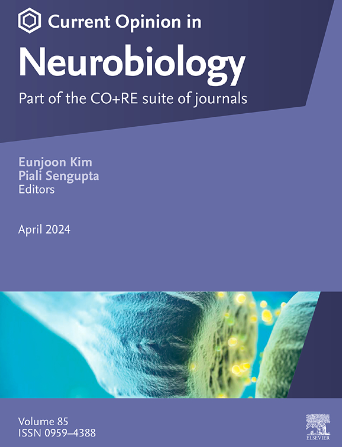Toward a probabilistic definition of neural cell types
IF 5.2
2区 医学
Q1 NEUROSCIENCES
引用次数: 0
Abstract
A classical view of cell type relies on a definite set of stable properties that are critical for brain functions. Single-cell technologies led to an extensive multimodal characterization of nervous systems and perhaps achieved one of Santiago Ramón y Cajal's dreams: to unveil a comprehensive view of the brain composition. While global analyses of brain structures highlight a degree of mesoscale stereotypy, a finer-scale resolution of brain composition shows significant variance in essential neural cellular phenotypes, including morphology, gene expression, electrophysiology, and connectivity. This highlights the need for novel conceptualization of the definition of a neural “cell type.” The challenge of modern neural classification is thus to integrate various distinct cellular properties into a unifying descriptor.
神经细胞类型的概率定义
细胞类型的经典观点依赖于对大脑功能至关重要的一组明确的稳定特性。单细胞技术导致了神经系统广泛的多模态特征,并且可能实现了Santiago Ramón y Cajal的梦想之一:揭示大脑组成的全面视图。虽然对大脑结构的整体分析强调了一定程度的中尺度刻板印象,但对大脑组成的更精细分辨率显示了基本神经细胞表型的显著差异,包括形态学、基因表达、电生理和连通性。这突出了对神经“细胞类型”定义的新概念化的需要。因此,现代神经分类的挑战是将各种不同的细胞特性整合成一个统一的描述符。
本文章由计算机程序翻译,如有差异,请以英文原文为准。
求助全文
约1分钟内获得全文
求助全文
来源期刊

Current Opinion in Neurobiology
医学-神经科学
CiteScore
11.10
自引率
1.80%
发文量
130
审稿时长
4-8 weeks
期刊介绍:
Current Opinion in Neurobiology publishes short annotated reviews by leading experts on recent developments in the field of neurobiology. These experts write short reviews describing recent discoveries in this field (in the past 2-5 years), as well as highlighting select individual papers of particular significance.
The journal is thus an important resource allowing researchers and educators to quickly gain an overview and rich understanding of complex and current issues in the field of Neurobiology. The journal takes a unique and valuable approach in focusing each special issue around a topic of scientific and/or societal interest, and then bringing together leading international experts studying that topic, embracing diverse methodologies and perspectives.
Journal Content: The journal consists of 6 issues per year, covering 8 recurring topics every other year in the following categories:
-Neurobiology of Disease-
Neurobiology of Behavior-
Cellular Neuroscience-
Systems Neuroscience-
Developmental Neuroscience-
Neurobiology of Learning and Plasticity-
Molecular Neuroscience-
Computational Neuroscience
 求助内容:
求助内容: 应助结果提醒方式:
应助结果提醒方式:


